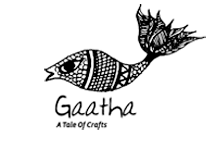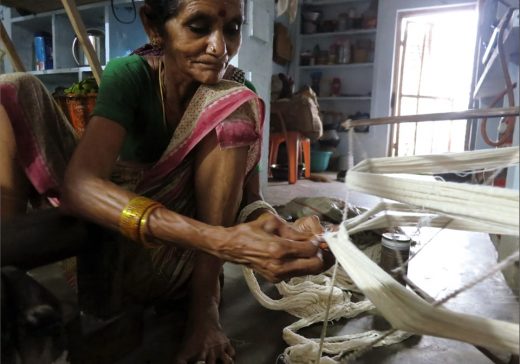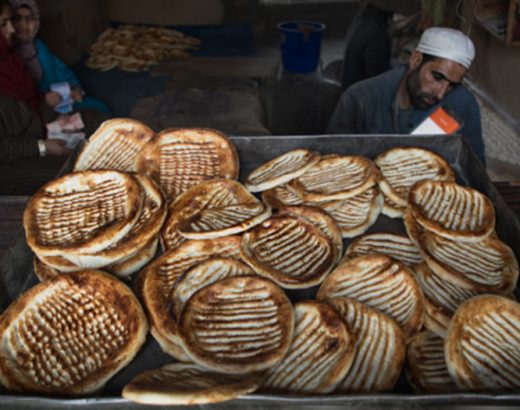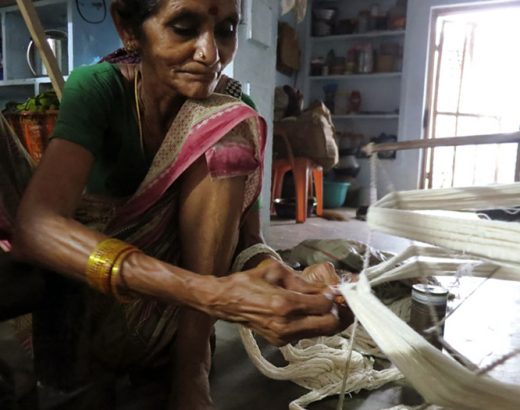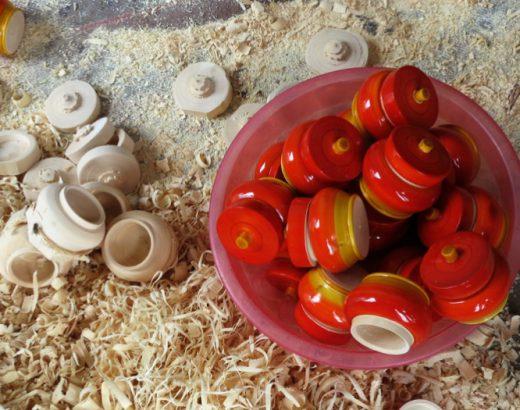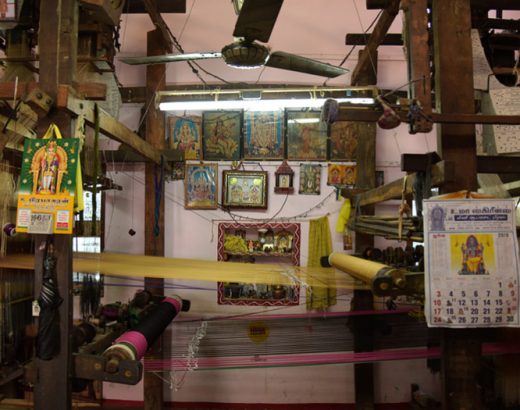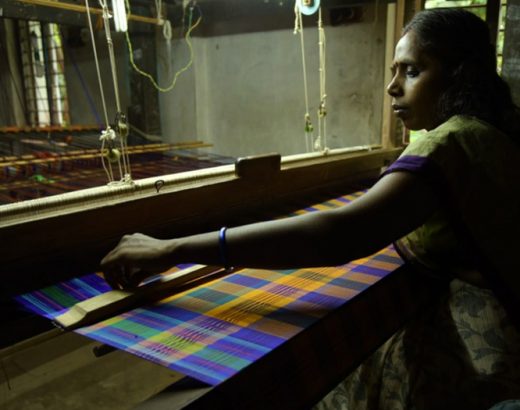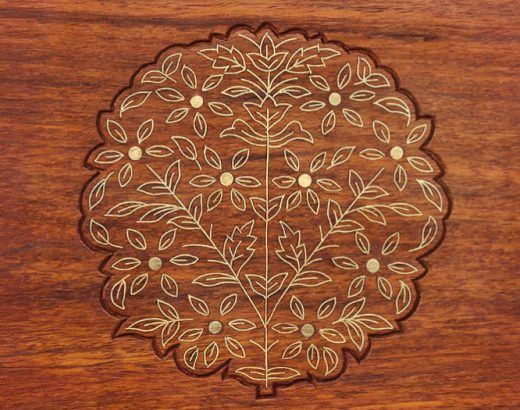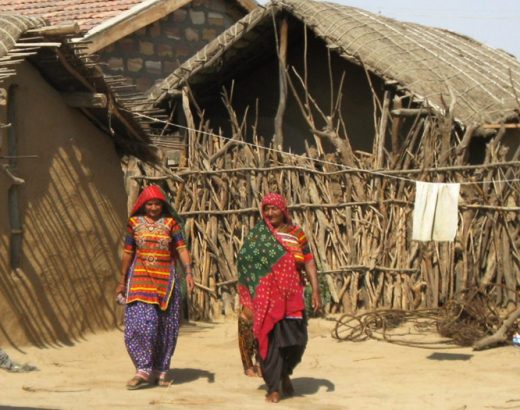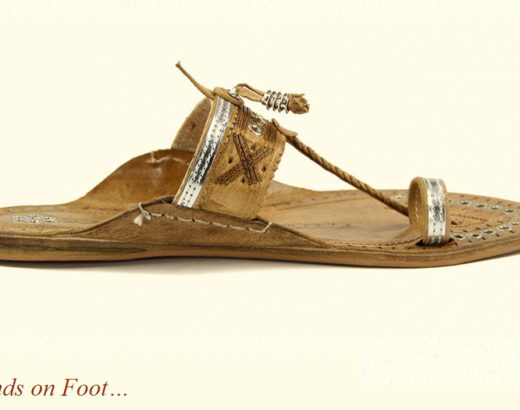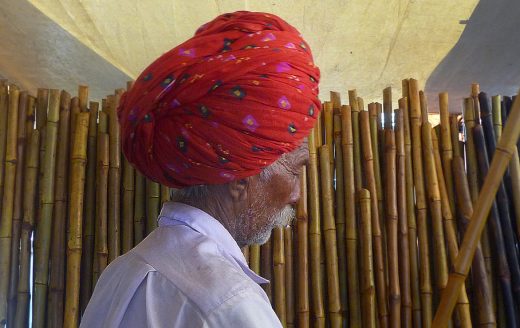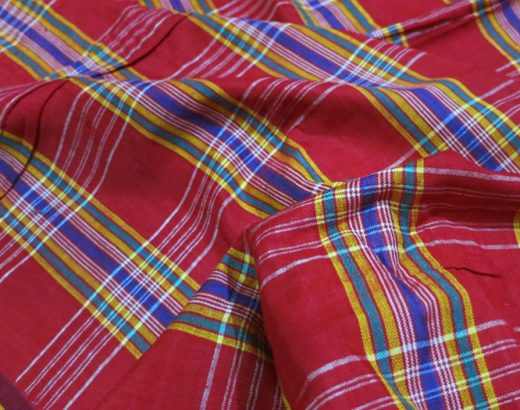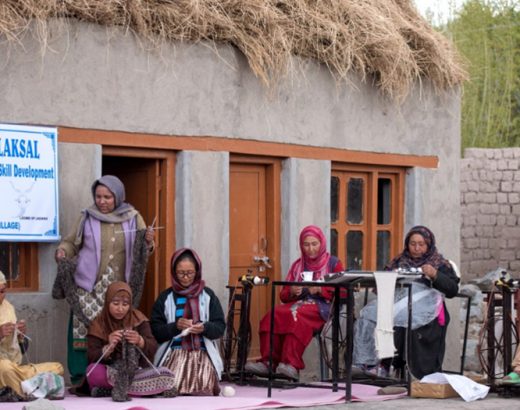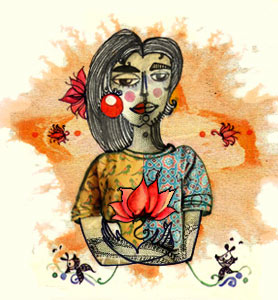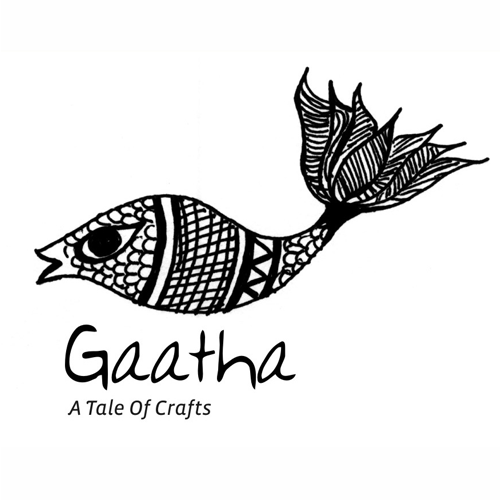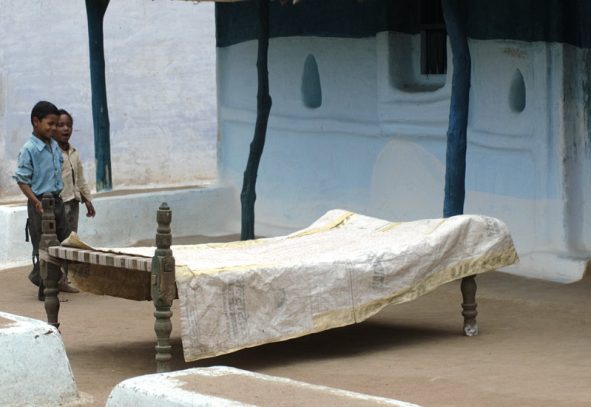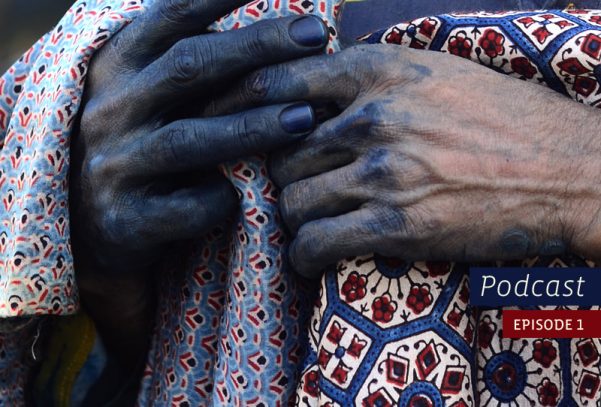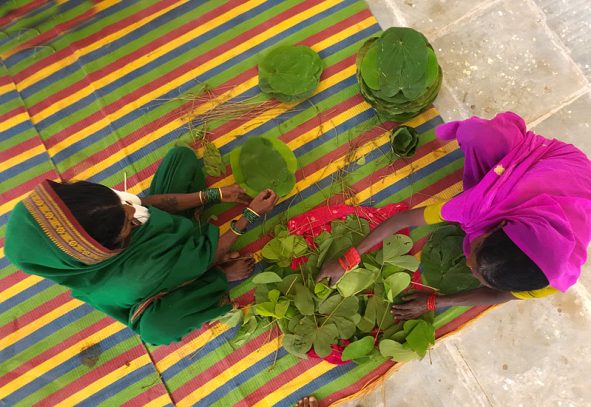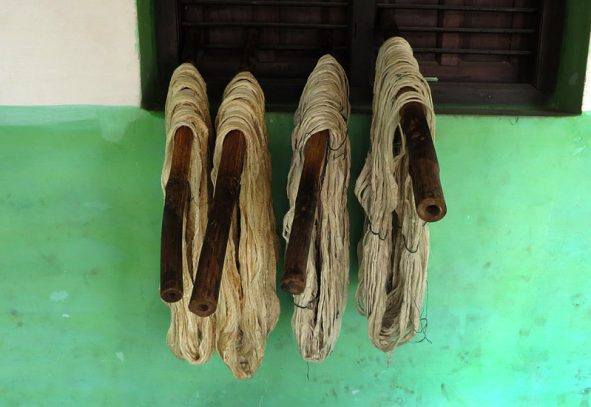The looms of Pochampalli, Venkatagiri, Narayanpet and Dharmavaram are well-known for their silk and cotton sarees all over India. Each loom is recognized with its distinct weaving style and variety of fabric.
It is a six inch round everyday breakfast bread. A small ball of dough is spread across a stone platform with the palm dipped in milk. Texturing it with the impression of the fingers, the naan-wai pulls the stretchy dough off the stone and slaps it on the warm oven wall gently. It come out with golden on the upper side and white on the lower and is usually had with butter or jam along with nun-chai.
Husband & wife weave together on a loom. Simple jacquards are used to make the motifs along with border with an extra weft.
Etikoppaka excelled in making playing tops and Baranis (wooden boxes) to contain various items to be offered to Gods since historic times.
they reached Madurai & mesmerized by the spiritual aura, finally settled in & later dispersed to various other places in Tamil Nadu from there, one of them being the Dindigul region. Their skill earned them the title of “Pattunulkarar”, meaning “the silk weaver”,
Koorai Pattu Pudavai, a sari for the lasting journey of marriages worn by women folk of a few casts of Hindu Community of Tamil Nadu
Pilkuwa motifs are inspired from existing vocabulary of motifs like Mughal Butta, Soorajmukhi Jaal, Tree of Life, elephants, peacocks, been documented by Sardar Hussain.
Mutwa embroidery... the embroidery of a girl who travels far in her imagination while social confines keep her within limits.
Kolhapuri chhapals easily identified by their look. also have names like Kapsae, Korwnda, ShahuMaharaj, Maherban, LadiesPaper etc.
Kevat community wears only red Bandhani turban at all occasions. Jat community in Narwa village wears a bright yellow turban.
Goa under the Portuguese rule used to be a hub for handloom weaving and many weavers had flourishing workshops that produced Kunbi sarees & kashtis.
On one of his district tours to Chumur, Deputy Commissioner of Leh, G. Prasanna Ramaswamy
About Gaatha
Gaatha brings to you, traditional handicrafts and the culture
behind them, directly from the very home of the
Indian artisan.
Gaatha
Categories
- Articles (111)
- Crafted with Love (1)
- Craftsmen (23)
- Dialogues (5)
- Events (3)
- Hands on (3)
- Indigenous Knowledge (2)
- Myths & Stories (20)
- People / Organization (2)
- Podcast (1)
- Post Card (3)
- Process (118)
- Products (9)
- Resource (8)
- Tale (160)
- Visits (20)
Like Us On Facebook

Trending
